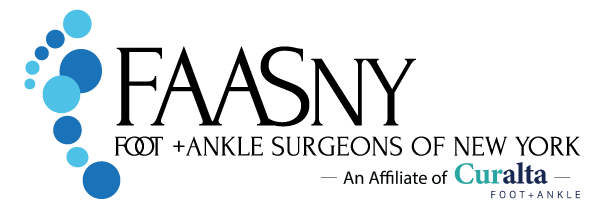Hallux Rigidus
What is it?
Hallux rigidus is a very common disorder of the great toe joint. It causes pain and stiffness in the joint, and with time it gets increasingly harder to bend the toe. This condition is also known as degenerative osteoarthritis. Because hallux rigidus is a progressive condition, the toe’s motion decreases as time goes on. In its earlier stage, when motion of the big toe is only somewhat limited, the condition is called “hallux limitus.” But as the problem advances, the toe’s range of motion gradually decreases until it potentially reaches the end stage of “rigidus,” in which the big toe becomes stiff, or what is sometimes called a “frozen joint.”
Causes
Common causes of hallux rigidus are faulty function (biomechanics) and structural abnormalities of the foot that can lead to osteoarthritis in the big toe joint. This type of arthritis – the kind that results from “wear and tear” – often develops in people who have defects that change the way their foot and big toe functions. For example, those with fallen arches or excessive pronation, familial anatomic tendencies, overuse from work or activity, inflammatory diseases such as gout or rheumatoid arthritis are susceptible to developing hallux rigidus. Your foot and ankle surgeon can determine the cause of your hallux rigidus and recommend the best treatment.
Symptoms
Early signs and symptoms include:
- Pain and stiffness in the big toe with use (walking, standing, bending, etc.)
- Pain and stiffness aggravated by cold, damp weather
- Difficulty with certain activities (running, squatting)
- Swelling and inflammation around the joint
Later development of the diseases produces:
- Pain, even during rest
- Difficulty wearing shoes because bone spurs (overgrowths) develop
- Dull pain in the hip, knee, or lower back due to gait changes
- Limping (in very advanced cases)
Diagnosis
The sooner this condition is diagnosed, the easier it is to treat. Therefore, the best time to see a foot and ankle surgeon is when you first notice symptoms. If you wait until bone spurs and advanced arthritis develop, your condition is likely to be more difficult to manage, and surgical considerations also change.
Non-Surgical Treatment
In many cases, early treatment may prevent or postpone the need for surgery in the future. Treatment for mild or moderate cases of hallux rigidus may include
- Shoe modifications
- Orthotic devices
- Medications
- Injection therapy
- Physical therapy
When Is Surgery Needed?
In many cases, surgery is the only way to eliminate or reduce pain. There are several types of surgery for treatment of hallux rigidus. In selecting the procedure or combination of procedures for your particular case, the foot and ankle surgeon will take into consideration the extent of your deformity based on the x-ray findings, your age, your activity level, and other factors. The length of the recovery period will vary, depending on the procedure or procedures performed.
